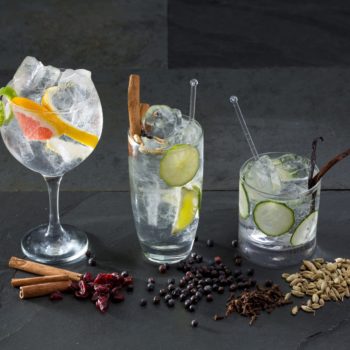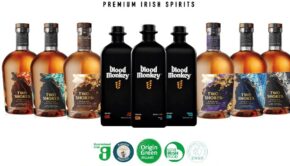New all-island strategy sets out plans by Irish gin producers to continue category growth by 2026

The Irish Gin Strategy 2022-2026 from Drinks Ireland|Spirits sets ambitious goals to grow exports in key markets and develop a vibrant domestic market
22 February 2022
A new strategy has set out plans by Irish Gin producers and brand owners to maintain market share and grow sales by 2026.
The plan sets out a range of goals and actions to drive exports in key markets, develop a vibrant domestic market, support the viability of Irish Gin distilleries and ensure the quality and standards of Irish Gin are protected.
There are now at least 37 distilleries on the island of Ireland producing Irish Gin, with over 70 brands. The Irish Gin Strategy 2022-2026 from Drinks Ireland|Spirits, the all-island trade body, details how Irish gin and gin has experienced a number of years of very fast growth, where sales soared. Between 2014 and 2020 the category grew by 184%.
While the ‘boom’ has been slowing in recent years, 2020 was the first year where Irish gin and gin sales declined, as a direct result of the pandemic. As the on-trade reopens, and global travel retail recovers, it’s anticipated that the category will return to pre-pandemic levels over time, and the new strategy details plans to drive strong and sustainable growth in the years ahead.
Currently, Ireland is the dominant market for Irish gin, but the strategy puts a heavy focus on driving export growth, earmarking the U.K., USA, Germany, Canada and global travel retail as the key targets in the coming years.
Asia – and China specifically – has also been identified as a target market, due to its size, growing stature and value heritage, which Irish distilling has, and innovation which drives much of the Irish gin category.
Irish gin is a premium plus product which has been established as a world-leader in terms of quality and authenticity. This has and will be key to positioning the category internationally, according to Drinks Ireland|Spirits.
The strategy also outlines how the sector plans to further grow the category domestically, by highlighting the local nature of Irish Gin products and the important role they play in the economic viability of the hinterlands that their producers and brand owners are based in.
Overall, The Irish Gin Strategy 2022-2026 sets out four goals for the category, with a number of corresponding actions:
- To promote world-leading standards for quality and authenticity
- To sustain a vibrant home market for Irish gin
- To promote Irish gin worldwide, starting in the key target markets
- To support the viability of Irish gin distilleries
David Boyd-Armstrong, chairman of the Drinks Ireland|Spirits’ Irish Gin working group, and joint founder and head distiller of Rademon Estate Distillery, which creates Shortcross Gin, said innovative and ambitious producers had driven the Irish gin sector to grow “extremely quickly” in recent years.
“Our strategy will enable the industry to take advantage of the opportunities in the domestic and international market and face the various challenges ahead,” Boyd-Armstrong said. “A key part of our strategy centres on protecting the Irish gin category, and we will be working to seek the introduction of rules covering the marketing and labelling of Irish gin in Northern Ireland and the rest of the UK to ensure consumers know what they are buying.”
“Irish gin has been a true national success story in recent years,” added Vincent McGovern, director of Drinks Ireland|Spirits.
“Our members employ dozens of people across both urban and rural Ireland producing this much-loved spirit and exporting to markets across the globe,” McGovern said. “Following a number of years of very fast growth, and in the context of the ever-changing national and international conditions, there was the need for a fresh strategy for the sector, to ensure it can recover from Covid-19, and continue to grow in the years ahead.”



 Print
Print






Fans 0
Followers